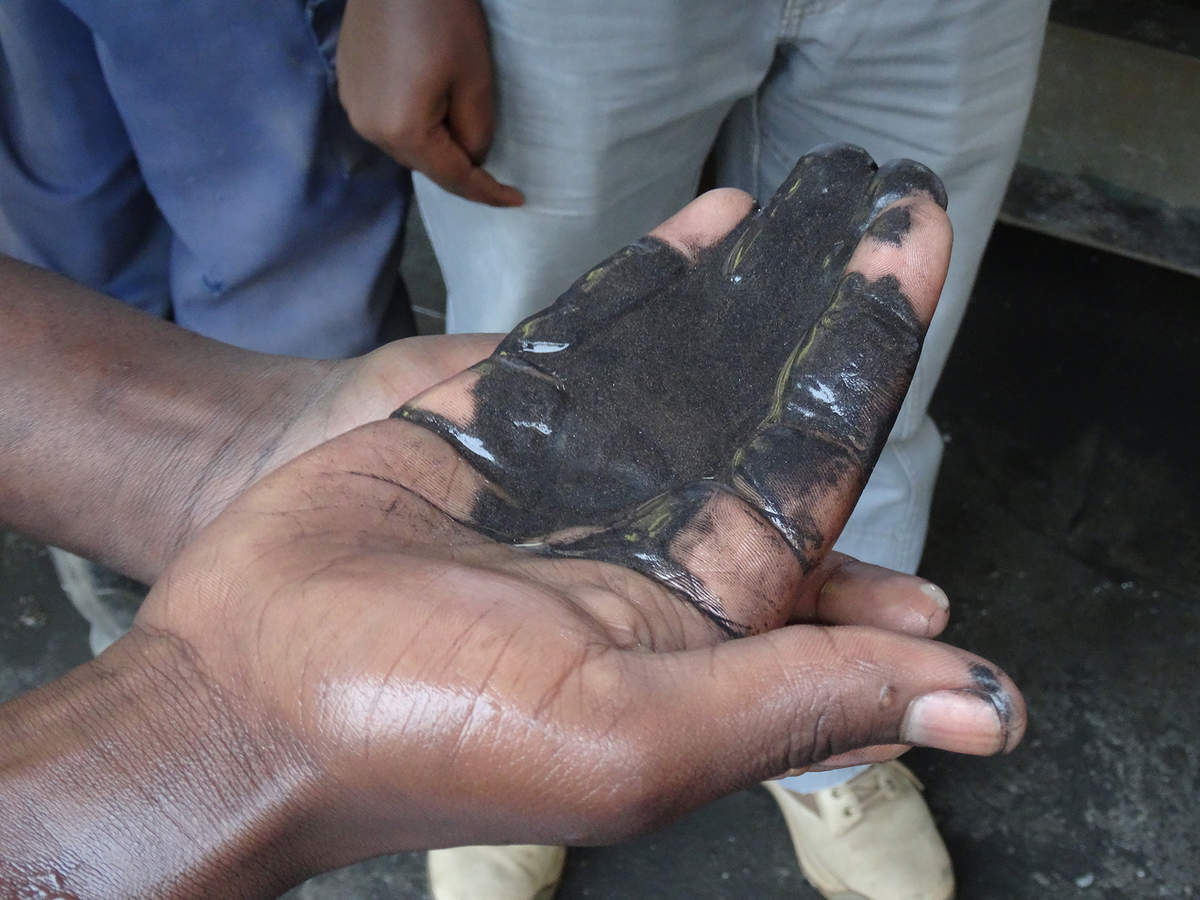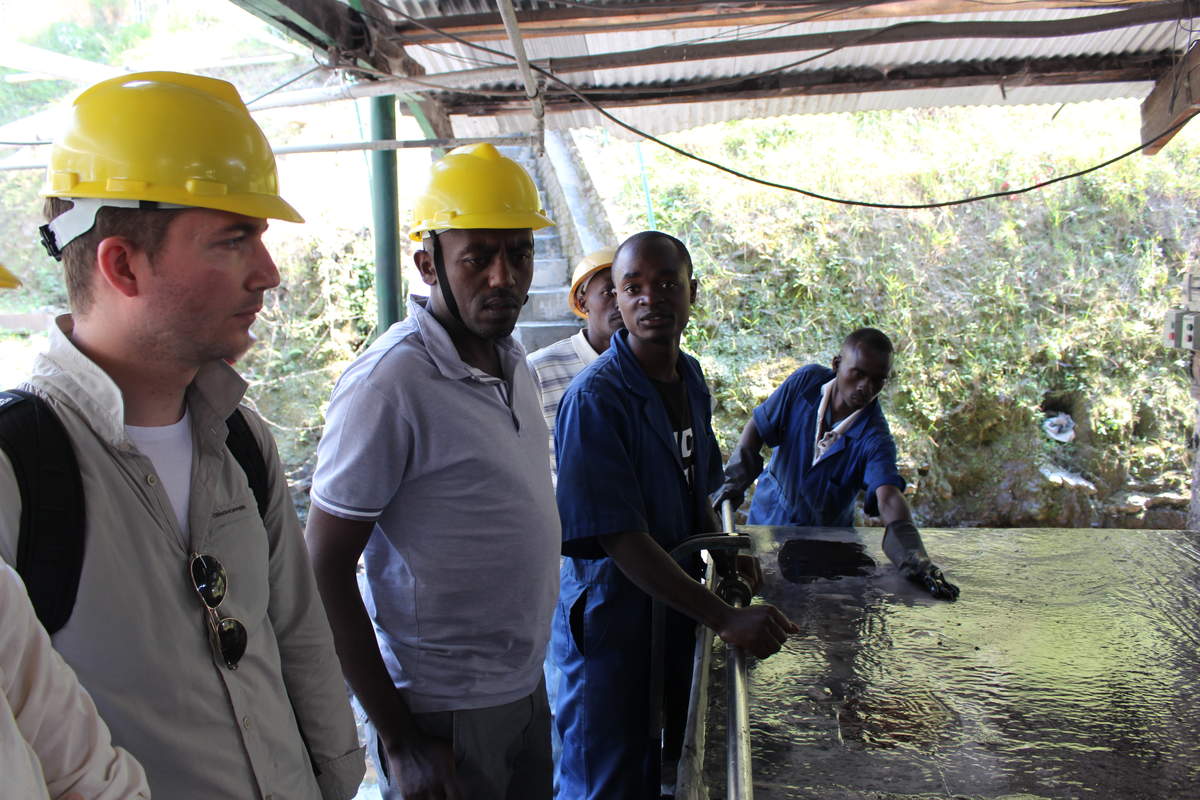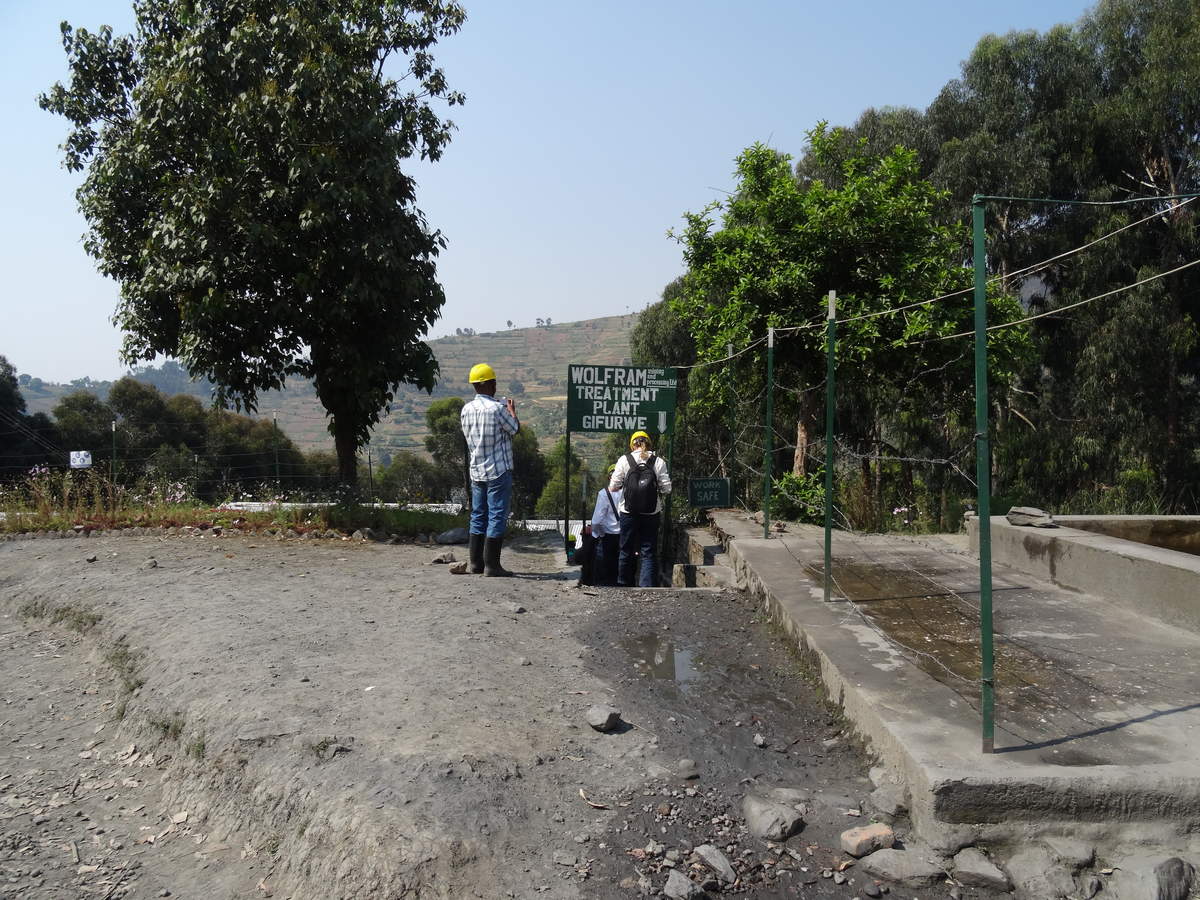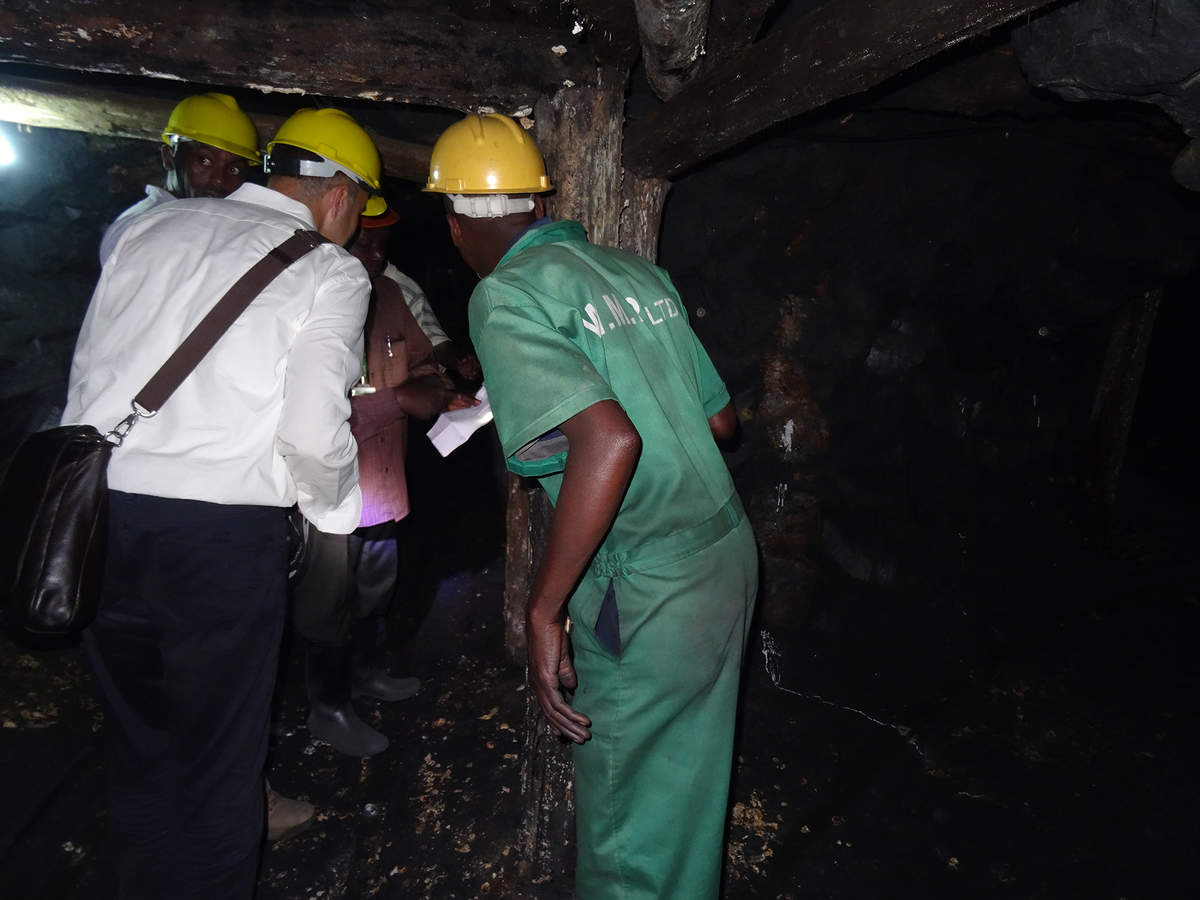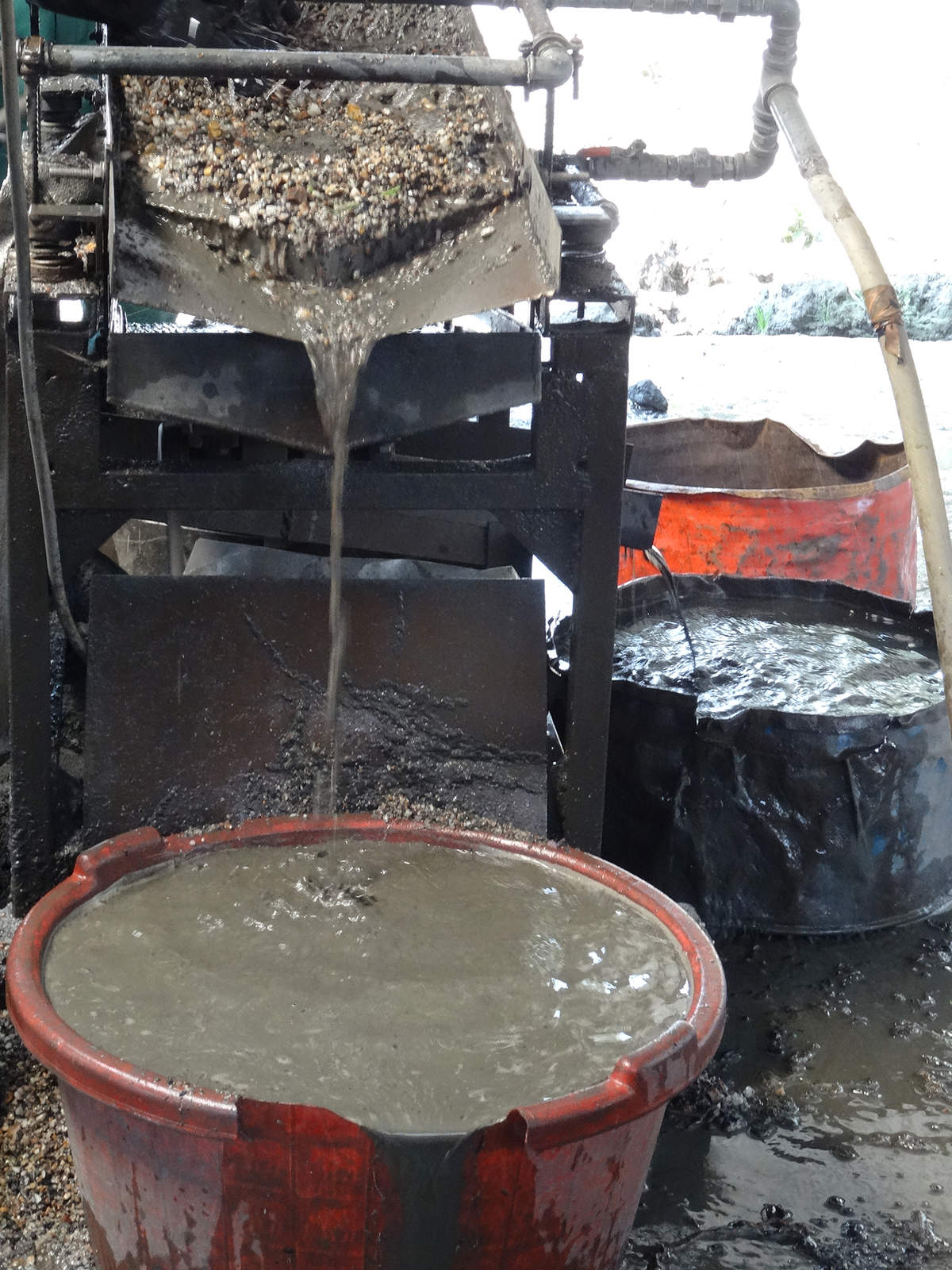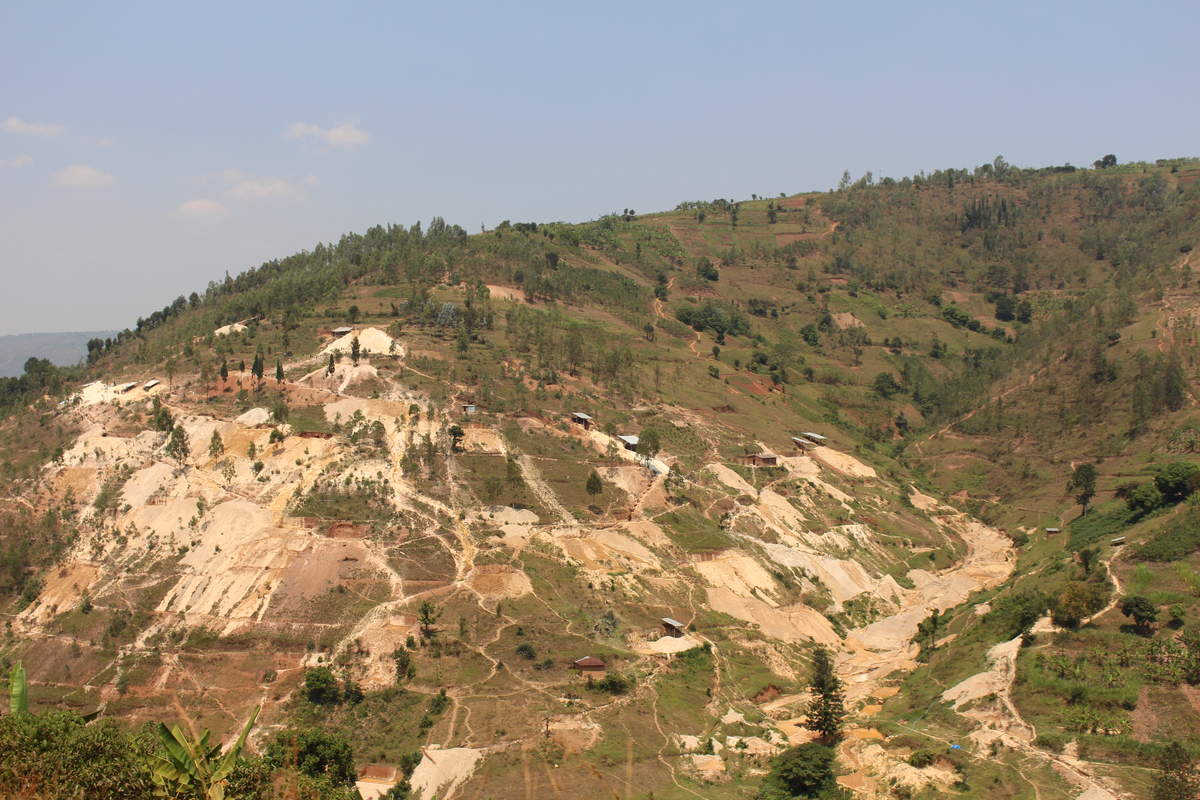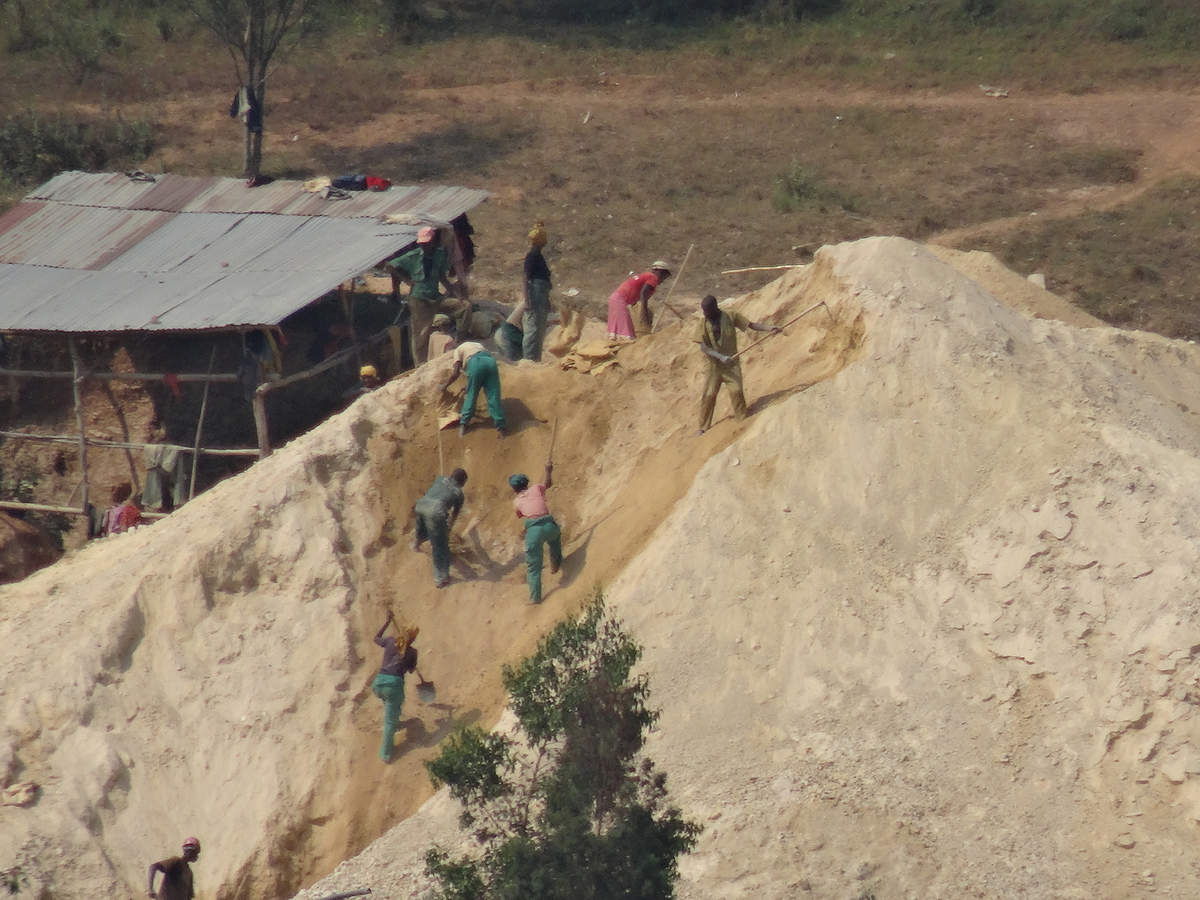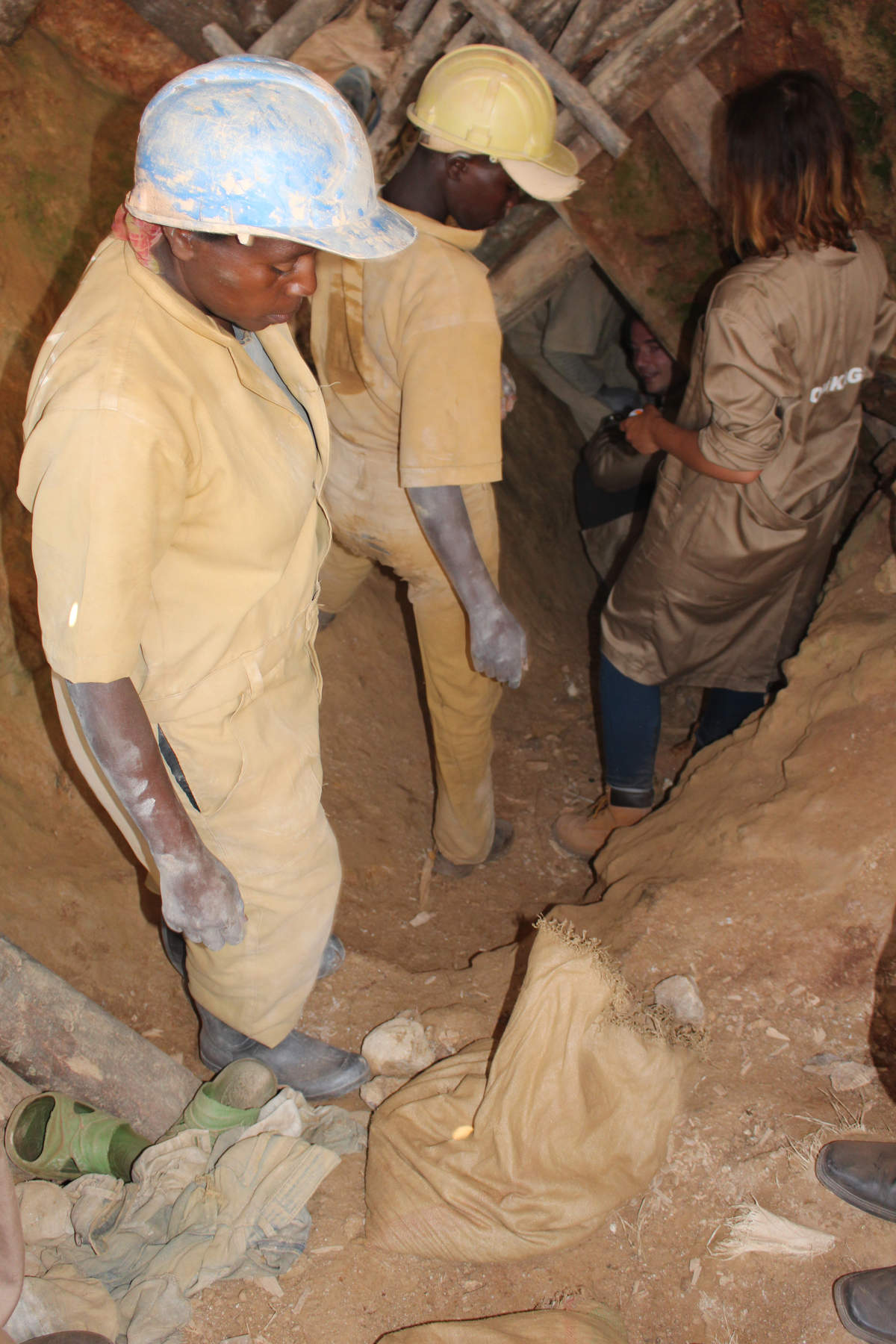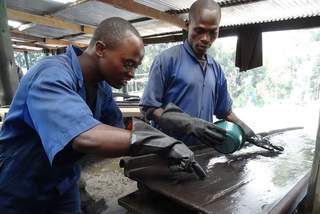
Mineworkers sieving tungsten at the Gifurwe mine in Rwanda © BDI
Deep in the African earth: raw materials extraction in Rwanda
I am about to climb down into the African earth. A few wooden beams mark the entrance. They have been driven into the rocky soil around a hole just wide enough for one man to pass through. Their purpose is to prevent the tunnel, which leads down almost vertically into the ground, from collapsing. Every day, dozens of men clamber down that tunnel – all at the same time. I am at a tin mine in Rwanda. It is July, and my colleagues and I are inspecting mining companies and cooperatives in this African country directly to the east of Congo, a notorious conflict region. Some of the openings in front of us lead to tunnels 100 metres deep. The miners usually form a human chain in the dark, narrow tunnel. The man at the furthest end of the tunnel digs out the ore-containing earth and puts it into sacks. The sacks are then passed on from man to man until they reach the surface. I want to find out how it feels to work like this. I climb carefully through the entrance and head into the tunnel. I only make it a few metres deep: I can still see daylight and yet I already find the lack of space unbearable. I cannot imagine climbing deep down – into the darkness, surrounded on all sides by walls of rock and earth.
Our trip to Rwanda is intended to give us insight into the African country’s mining activities. We want to gain a picture of what effect international efforts to certify the origins of “conflict resources” are having on supply countries. The concept of certification seems sensible. Market players the world over want to ensure that their acquisitions do not help finance conflicts in Congo, Rwanda’s immediate neighbour. That means mining companies have to demonstrate that their products are not being used in this way. They have adopted a “bag and tag” system, which involves the sacks containing the ore being sealed with an electronic tag while they are still at the mine. The sacks cannot be opened without making the electronic code unreadable.
During our visit in July 2015 we saw very clearly that fulfilling the requirements for transparent mining places a heavy burden on Rwanda’s raw materials sector. We learned that the fees for the bag and tag system are extremely high – and that they are by no means transparent themselves. The people we spoke to at the mine did not know how the fees are calculated. There is currently only one company in Rwanda offering the system; it thus has a monopoly and the producers are dependent on it because without the certificates the mines would not be able to sell their ores on the global markets. On top of that, several customers have turned elsewhere anyway for fear of damaging their image.
I was astonished by how clean and tidy, how organised and peaceful Rwanda seemed. The capital city Kigali has pavements – my colleagues who know Africa well tell me that is very rare for an African city. And I never felt unsafe during my time in Rwanda, even though it was my first time in Africa. It was also the first time I have ever witnessed ore being extracted from the earth. I found the extremely different dimensions of mining in the country particularly fascinating.
There was the tiny mine consisting of holes in the earth, and then two hours’ drive away there was a big industrial mine such as you might find in Germany. In the big mine, machines drive tunnels into the rock large enough for a man to walk upright in – with modern ventilation systems and rails for transporting the ore in mine carts. But however different the production methods might be, I was astonished to see how well managed all the mines we visited were. Even the small mine was able to show us detailed records of how much ore a mineworker extracts each day, and how much he earns.
Each miner receives around 50 cents a day. In western terms, that is an incredibly low wage. But mining jobs are highly coveted in Rwanda – miners earn twice as much as farmers, for example.




